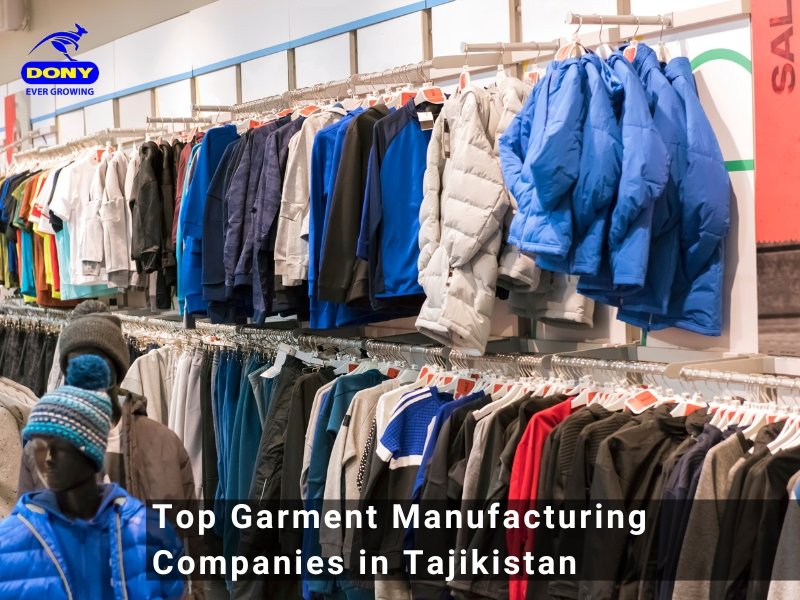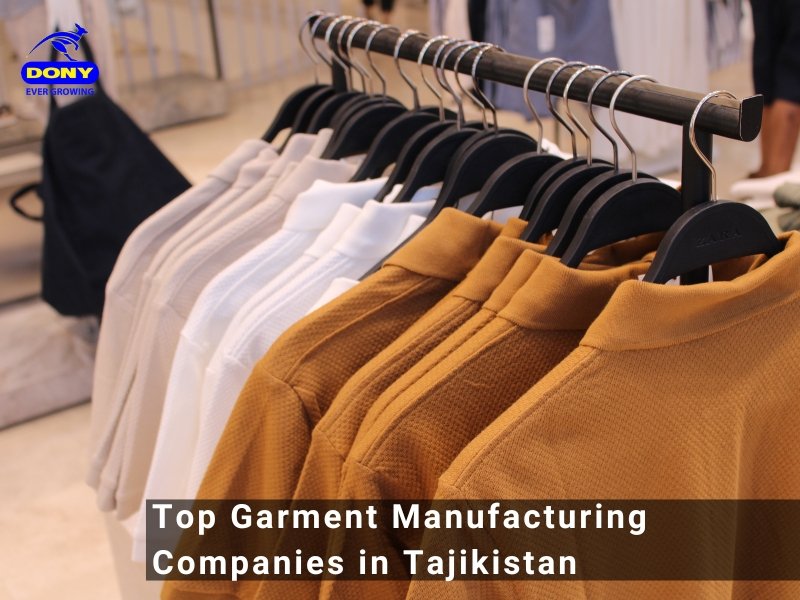Besides being one of the most populous countries in Central Asia, Tajikistan is home to many top list garment manufacturing companies. Currently, the country is undergoing a rapid growth phase, with the government increasing the production of apparel and other consumer goods. However, the government has also introduced new taxes and regulations that may pose a threat to the sector. These new policies include a tax on remittances from labor migrants. The Overseas Private Investment Corporation (OPIC) is also active in Tajikistan, and China is the country’s largest investor.
1 China is Tajikistan’s largest investor
During the first quarter of this year, bilateral trade volume grew by 100 percent from the same period of the previous year. Tajikistan received US$213 million in foreign direct investment. However, the government has kept the terms of agreements secret.
China is the largest foreign investor in Tajikistan. A total of 330 Chinese enterprises operate in the country. These include textile, garment and garment manufacturing companies. They are also involved in construction, telecom and energy development. The Government of Tajikistan looks for foreign investors to finance domestic infrastructural projects.
A number of projects have been initiated and completed with Chinese investment. For example, a $3.2 billion section of Line D, part of the Turkmenistan-China pipeline, was built in Tajikistan. The project is operated as a joint venture between the China National Petroleum Corporation and Tajiktransgaz. It will serve as a key component in the transport of oil and gas from Turkmenistan to China.
There are several Confucius Institutes in Tajikistan that offer classes in Chinese culture. These institutions are hosted by two universities and allow people to learn the language and culture of China.
Another example of Chinese investment in Tajikistan is the Talco aluminum smelter. This smelter is the country’s biggest industrial asset. The plant requires a major upgrade. It is using up to 40 percent of the country’s limited energy supply. The company has announced plans to modernize the smelter. The project is expected to be completed in two stages.
The government has given tax benefits to Chinese firms investing in Tajikistan. The government has also given approval to the construction of a Chinese military base in the Gorno-Badakhshan Autonomous Region.
2 SOEs lack clear governance and internal control procedures
Regulatory reforms are not announced by the government in Tajikistan in 2018. In 2018, the government did not make changes to the Tax Code, the Civil Code, the Law on Economic Regulations, the Anti-Corruption Agency’s rules, the Law on Protection of Consumer Rights, or the Law on Administrative Procedures.
The judicial system in Tajikistan is non-transparent and is not reliably enforced. In the past, officials have used government agencies to pressure businesses, including those that are foreign-owned. The Prosecutor General’s Office, the Tax and Customs Authorities, and the Agency on State Financial Control and Fight Against Corruption have all faced a moratorium.
The government has been criticized for taking an opportunistic interest in profitable companies. It is not predictable what taxes will be applied to private enterprises, and the government may threaten to impose inflated taxation charges on businesses.
The SOEs in Tajikistan do not follow the OECD Guidelines on Corporate Governance for SOEs. In addition, most of the lending from state-owned banks is politically motivated. These banks are often unwilling to provide credit to private firms. The World Bank is exploring opportunities to strengthen the financial reporting capacities of SOEs.
The state-owned enterprises are active in agricultural and metal manufacturing, food processing, automotive/ground transportation, and information and communication. The government has also planned to split the national electrical utility Barqi-Tojik into three public/private partnerships by 2020.
The civil code contains provisions for the protection of intellectual property. However, IPR does not represent a significant portion of the Tajik economy. This is a problem, as private businesses cannot compete with the SOEs in the same market.
There have been several disputes between foreign investors and the government over the implementation of tax incentives. These cases have primarily focused on the application of the tax code, with some companies claiming that their tax codes are applied arbitrarily.
3 Taxation of remittances from labor migrants
Despite its economic problems, Tajikistan remains the world’s most remittance-dependent country. Over the past decade, remittances have played a central role in boosting growth.
The economy is vulnerable to exogenous shocks. In response, the Tajik government has refocused on large-scale infrastructure projects and transportation. However, Tajikistan’s business sector is dominated by members of the ruling regime. The business environment is also highly corrupt.
Remittances are the second largest source of income after wages. They represent about 20 to 50 percent of the GDP. The main exports of Tajikistan are cotton and aluminum. Since the war, the economy has grown at a rate of seven percent per year. In addition to this, favorable global prices for cotton and aluminum have helped Tajikistan grow.
The economy has also benefitted from the increase in remittances from Tajik labor migrants in Russia. The influx of Tajik workers has been helpful in reducing Tajikistan’s external debt. But the impact of emigration is a concern for the future of the country’s economy.
The migration of household members may have opposing effects on the supply of household labor. For example, households that receive remittances may need to substitute for the loss of adult household workers. Women’s labor supply is likely to be lower because of their innate risk aversion. If women can’t access remittances, they might find it difficult to work. On the other hand, remittances from migrant household members may help household members that stayed behind to work.
The government hasn’t taken adequate measures to improve the productivity of remittances. As a result, the income from remittances is not re-invested in the economy. This may reduce incentives for the government to develop the domestic economy.
4 Foreign currency is limited on the domestic financial market
Despite its centralized and authoritarian nature, Tajikistan’s business sector is highly corrupt. The governing elites pressure commercial banks to provide loans for projects that they believe are unprofitable. Consequently, most lending is political, not financially sound. Private companies cannot compete with state-owned enterprises (SOEs) without access to government-financed credit.
Remittances are a significant part of the economy, although they have fallen dramatically in the past few years due to the global economic crisis and the collapse of the Russian ruble. They go toward household consumption and to support families. The fall in remittances has led to inflation. It also has slowed poverty reduction in Tajikistan.
The Government of Tajikistan has adopted an Action Plan for the Improvement of the Investment Climate for the Industrial Sector, which is being implemented. The Action Plan was initiated in 2003 and extended in February 2019. The Action Plan was designed to improve the conditions for the development of national production and entrepreneurship.
In addition, the Tajik government established four Free Economic Zones, which offer lower customs fees and taxes. However, the government screens investment proposals into the Free Economic Zones and evaluates the impact of proposed projects.
While there are some incentives available for foreign investors, the judicial system is opaque and the bureaucratic process can be complex. There are dozens of foreign-owned companies that have complained about the arbitrary application of the tax code.
In the manufacturing sector, President Rahmon announced a moratorium on irregular state inspections for two years. The moratorium applies to the National Bank, the Prosecutor General’s office, the Agency on State Financial Control and Fight Against Corruption, and all other inspection agencies.
5 Overseas Private Investment Corporation (OPIC) is active in Tajikistan
OPIC (Overseas Private Investment Corporation) is an agency of the U.S. government that supports development in emerging markets. It provides financing through direct loans and political risk insurance.
OPIC works in approximately 150 countries and supports investment funds in multiple economic sectors. It offers medium-term to long-term funding and credit programs for U.S. firms to invest in developing nations. In addition, it provides technical assistance and risk mitigation for investees.
Overseas Private Investment Corporation is governed by a board of directors and a president and CEO. Each executive is nominated by the president and confirmed by the Senate. The OPIC Board of Directors also includes a representative of USTR. The Overseas Private Investment Corporation is fully insured and operates at no net cost to American taxpayers.
Overseas Private Investor Corporation supports private equity investment funds, which make direct equity investments in emerging market companies. They also provide technical support and financial product offerings to promote U.S. private investment in developing countries.
The Connect Africa Initiative (CAI) was launched in July 2018. It aimed to fund infrastructure projects in Africa. CAI pledged a commitment to invest up to $1 billion over three years for projects supporting telecommunications, internet access, and value chains that connect producers to end users. It also pledged essential infrastructures such as railways and ports.
OPIC focuses on impact investing, which aims to produce social and financial returns while generating positive social impacts. Its portfolio includes a 10-year closed-end fund called the Global Environmental Emerging Markets Fund. Its currency inconvertibility coverage compensates investors for new currency restrictions.
In FY2015, OPIC provided nearly $20 billion in total exposure. On average, 80 percent of the projects it supported were American small businesses.
 Henry Pham (Pham Quang Anh), CEO of DONY Garment
Henry Pham (Pham Quang Anh), CEO of DONY Garment
This year, we have found that many international buyers are seeking new suppliers based in nations outside of China and Thailand to purchase many goods and products, including uniforms, workwear, reusable cloth face mask, and protective clothing.
At DONY Garment, we are proud to welcome international customers, especially those based in the US, Canada, the Middle East, and the EU market to discover the professional production line at our factory in Vietnam.
We guarantee our products are of the highest quality, at an affordable cost, and easy to transport across the world.
 Dony Garment Vietnamese Garment Factory Supplier – Apparel Clothing & Textile Manufactured. Private label clothing Produce women, men, children baby wear – Casual Clothing, Uniform, Workwear
Dony Garment Vietnamese Garment Factory Supplier – Apparel Clothing & Textile Manufactured. Private label clothing Produce women, men, children baby wear – Casual Clothing, Uniform, Workwear







 Henry Pham (Pham Quang Anh), CEO of DONY Garment
Henry Pham (Pham Quang Anh), CEO of DONY Garment



